Este post também está disponível em:
Português
English
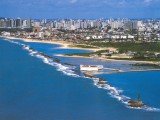
Rising high above the dunes, Natal overlooks its long and beautiful coastline, turning its back to the Potengi River – the ancient Rio Grande do Norte, which gave its name to the captaincy, the province and, finally, the state.
The city of Natal developed on the left bank of the river, a region primitively inhabited by the Potiguares Indians.
The city was founded in 1599 with the construction of a fort to protect the captaincy of Rio Grande do Norte, which had been raised from the Potengi River – a strategic point from which the Portuguese colonizers observed the entire territory in search of possible threats.
Even so, the capital of Rio Grande do Norte was invaded by the Dutch, who left a historical legacy that continues to this day in the city.
The Portuguese celebrated a mass in the old camp, called Natal since then.
The folklorist Luís da Câmara Cascudo coined for the state capital the expression “bride of the sun”, a lyrical nickname quite appropriate for the bright and cheerful city, sunny much of the year, which offers visitors a wide hotel structure, concentrated mainly on Via Costeira, a seaside avenue that connects the center, in the upper part, to Ponta Negra, which concentrates the nightlife.
Natal is the starting point for those who want to explore the famous dunes of Genipabu, north of the Potengi River, and the magnificent coastlines to the south and north, which can be covered by traditional buggies.
See the tourist map of Rio Grande do Norte
Videos about NATAL RN
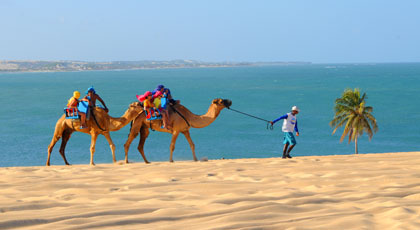

Genipabu em Natal - Guia Turismo

Natal RN - Guia de Turismo

Forte dos Reis Magos em Natal RN
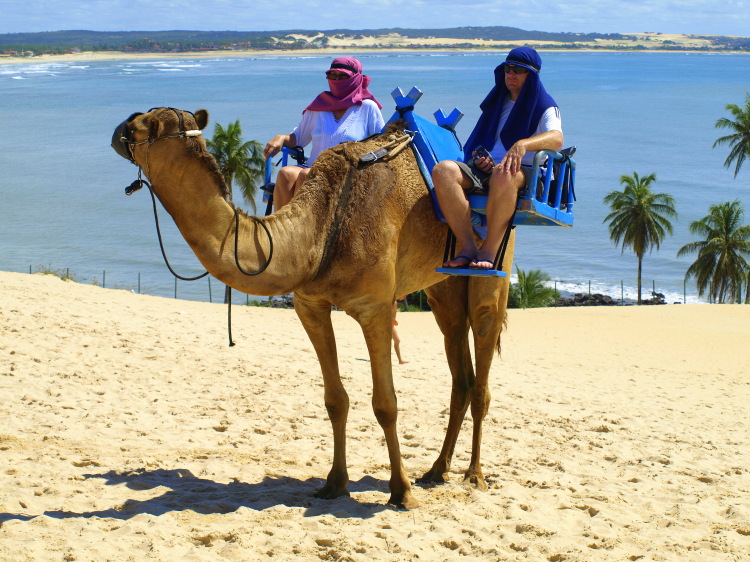
Genipabu - Dicas de Viagem

Natal RN - Guia Completo26:18

Forte dos Reis Magos em Natal RN09:06
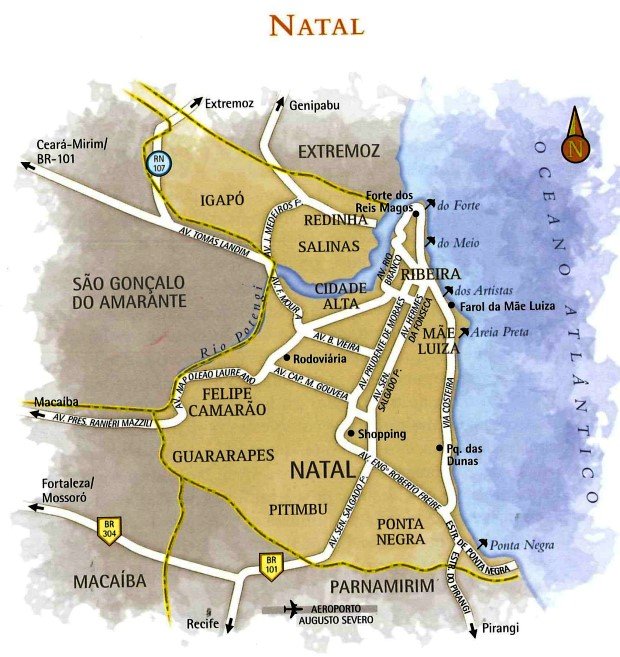
Tourist Spots of Natal RN
The beaches of Natal are the great attraction of the region, with its crystal clear waters and dunes that allow the practice of sports, as well as beautiful photos.
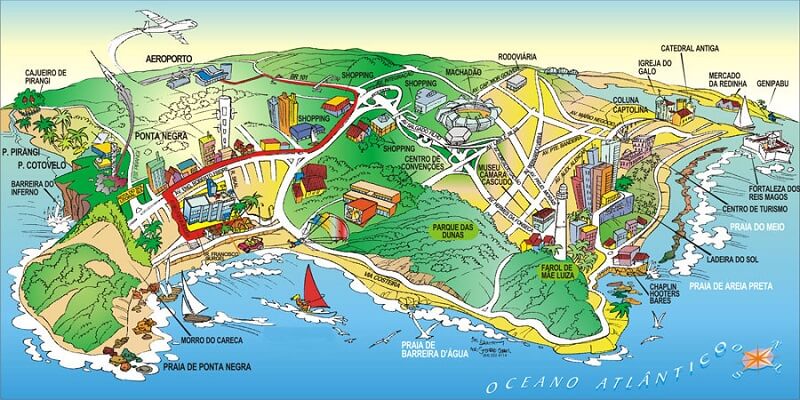
The Ponta Negra Beach is one of the most famous and it is located Morro do Careca, a dune surrounded by Atlantic forest and that gives view to one of the most beautiful sunsets in the region.
It is also worth visiting the neighborhood of Ponta Negra, where you can find bars and restaurants on the waterfront, as well as Avenida Roberto Freire and Praia de Ponta Negra with stunning views.
The beach is also ideal for those who want to take surfing lessons, as well as take a photo at the iconic sign “Amo Natal”.
Avenida Senador Dinarte Mariz, better known as Via Costeira, is another interesting point worth visiting in Natal. It is an avenue that cuts the coast of the city from east to south.
The occupation is predominantly hotel which provides visitors with accommodation options with seafront views;
The promenade of the road allows tourists to do outdoor activities such as running and cycling. For those who like adrenaline, taking a paragliding flight is an unforgettable experience.
For those who want to know an unusual point of nature in the region, the beaches of Meio and Artistas are worth the visit since they are connected. In their sandy strips, it is possible to observe reefs that form natural pools, according to the tide. It is a must for those who want to swim in calmer waters.
For those looking for a more spiritual activity, it is worth visiting the statue in honor of the queen of the sea Iemanjá, located in Praia do Meio. For those who like to take souvenirs from the places they visit, at Praia dos Artistas it is possible to enjoy the local handicrafts with nearby ferries.
Two other beaches that are not located in Natal, but are worth a visit for their proximity are Pipa and Genipabu.
A Praia de Pipa , located 85 km from the state capital, is ideal for those who enjoy practicing sports on the beach, such as surfing, as well as a busy night with ballads and lots of movement.
Already the Praia de Genipabu is considered a true oasis of the region. Located 20 km from Natal, the beach is perfect for those who enjoy admiring the beauties of the dunes by buggy ride, for example.
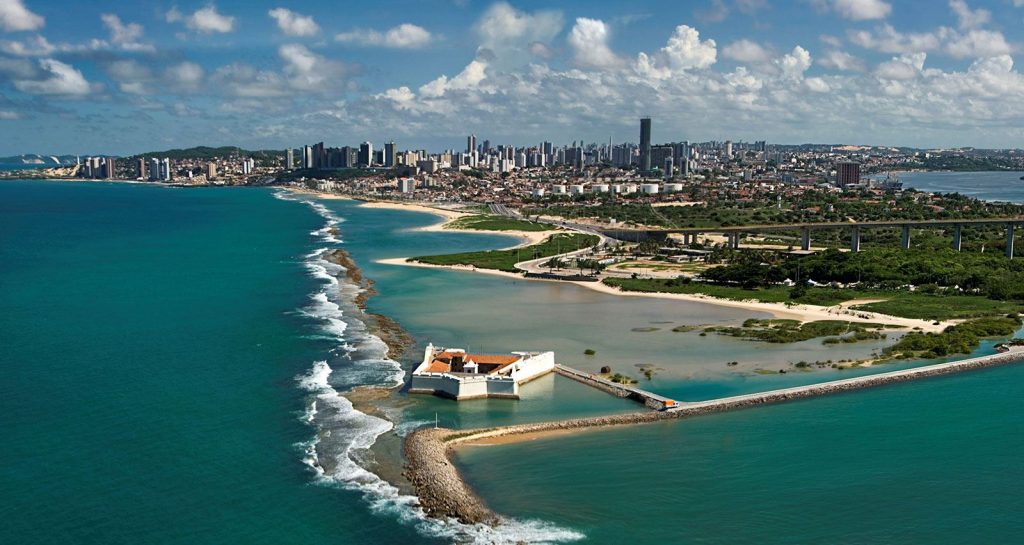
1. FORT OF THE MAGIC KINGS – FORTE DOS REIS MAGOS
The Forte dos Reis Magos was strategically straddled at the point where the Potengi flows into the sea, the five-pointed star-shaped Forte dos Reis Magos began to be built in rammed earth on Kings Day 1598 – hence its name – to protect the city from French invasions.
In 1628 the rammed earth was replaced by stone. Well preserved, the building is reached by a footbridge of about 800 meters, stretched over the mangrove. The view from the fort – the city of Natal, the sea and the river – is unforgettable.
The historic Marco de Touros, a lioz stone with the cross and shield of the king of Portugal, originally set up on what is now known as Marco beach, in São Miguel do Gostoso, to mark the possession of the land by the Portuguese, can be seen in the weapons warehouse.
In the former captain’s quarters there is a small exhibition of objects found in excavations. In the dungeon are the three impressive torture rooms – in one of them, you can still see the deep hole, which filled with the rising tide, where prisoners were drowned (av. Café Filho, s/n, Praҫa do Forte).
2. FAROL DE MÃE LUIZA AND PARQUE DAS DUNAS
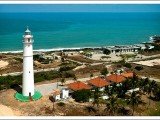
One hundred and fifty steps on a spiral staircase lead to the highest point of the Mãe Luiza Lighthouse, also called the Natal Lighthouse, inaugurated in 1951.
The construction is 37 meters high, but, because it is located on a dune, it is 87 meters above sea level, with a range of about 39 nautical miles (72.7 kilometers). The 360-degree view is one of the most beautiful in the capital (Rua Camaragipe, s/n, Mãe Luiza).
From the lighthouse you can see part of the pleasant Dunas de Natal State Park (or, simply, Parque das Dunas), the first conservation unit in Rio Grande do Norte, created in 1977.
Since 1994, the park has been part of the Biosphere Reserve of the Brazilian Atlantic Forest, occupying a coastal strip of 1172 wooded hectares, well signposted and cared for, on a huge dune.
There is a walking track, children’s playground, amphitheater, picnic area and visitor center, where it is possible to schedule a visit to the nursery.
With a permanent exhibition of photos of the park, the center has a library, bathroom and drinking fountains.
There are guided trails to Perobinha (800 meters, round trip, easy level, suitable for children), Peroba (2800 meters, round trip, including a visit to the viewpoint of Barreira Roxa) and Ubaia Doce (4400 meters, round trip, difficult level, with steep slopes). Av. Alexandrino de Alencar, s/n, Morro Branco).
3. NIGHT IN PONTA NEGRA
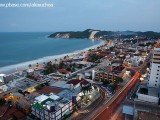
With the exception of Ribeira, the neighborhoods and central areas of Natal are deserted and dark at night, in contrast to the coastal neighborhoods.
The hype is mainly concentrated on the promenade in front of Ponta Negra beach, near Careca hill, which is closed to preserve the dune from erosion.
On this stretch, stores, restaurants and bars with music are open until late, attracting mainly tourists, the “buggy drivers” who accompany them and groups of young people from Natal.
To take a break from the hustle and bustle, you can walk to the opposite side of the hill along the pleasant Portuguese stone promenade, enjoying the sea breeze.
4. HIGH CITY OF NATAL
The settlement of Natal was concentrated in the highest portion of the territory of Rio Grande do Norte, today known as Cidade Alta.
The lower part received the rainwater that came down from the upper part until it met the Potengi River. From this circumstance emerged the Ribeira neighborhood.
The two parts bring together the oldest buildings and squares in the city, sometimes overlooked by tourists eager to explore the attractions of the coast; not infrequently buildings and landmarks open and close their doors daily receiving few visitors.
The building that houses the Historical and Geographical Institute of Rio Grande do Norte draws attention on the route between the Ribeira and Cidade Alta neighborhoods: neoclassical in style, it has a collection of rare books, as well as an old baptismal font from the parish church.
On the doorstep is the Capitoline Column, with which Benito Mussolini presented a gift to Natal for the welcome given by the residents to two Italian pilots who landed there in 1928 (Rua da Conceiҫão 622, Centro).
The tour should include a visit to the tiny Café Filho Museum, with objects and books by the potiguar who was president of Brazil between 1954 and 1955 after the suicide of Getúlio Vargas.
The museum is housed in a townhouse listed by Iphan, built between 1816 and 1820 and known as the “bridal veil” because its roof, painted white, has a steep slope (Rua da Conceiҫão, 601, Centro).
The Alberto Maranhão Theatre, founded in 1904 by the governor after whom it is named, is the most important in Rio Grande do Norte.
Hydraulic tiles, large crystal mirrors and eye-catching chandeliers welcome the visitor, who then comes across an area with a small garden, benches, a café and a souvenir store.
The theater itself is quite pleasant, with a blue floor brought from Belgium, wooden armchairs and two floors of audience with 642 seats (Praҫa Augusto Severo, s/n, Ribeira).
5. RIBEIRA IN NATAL RN
Walking along the beautiful cobbled Chile Street is worth the trip to the historic Ribeira neighborhood, located in the lower part of the city. During the day, the port shuttle and the fishing boats on the Potengi River predominate.
At night, the nightclubs attract a young crowd. In Ribeira is the so-called Pedra do Rosário or Paço da Pátria, actually a deck over the waters of the Potengi where there is a replica of the image of Our Lady that, according to Câmara Cascudo, was found in a crate that ran aground there on November 21, 1753, the day of Our Lady of the Presentation, patron saint of Natal.
The original saint is in the city’s cathedral.
The deck is the ideal place to enjoy the sunset amidst the various boats at anchor.
Nearby is the well-known Canto do Mangue, a small pier where fishermen arrive at dawn bringing fresh fish to do business there.
In the surrounding bars, they drink beer and eat fried fish accompanied by tapioca with coconut.
6. INFERNO BARREIRA LAUNCHING CENTER
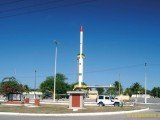
A beautiful reddish cliff 28 meters high, called by fishermen the barrier of hell, gives its name to the center, located on a strip of land by the sea between the beaches of Ponta Negra, to the north, and Pium, already in the municipality of Nova Parnamirim.
Created in 1965, it now operates only by collecting meteorological information; the launch base was transferred to Alcântara, in Maranhão.
At Barreira do Inferno, you can see replicas of the rockets and observe the two launch pads from a viewpoint.
Visits are always scheduled and monitored, since the area belongs to the Army. It is necessary to go by car, as long distances are covered within the complex. (Rod. RN-063, Parnamirim, km 11.
7. Tour through the life and works of CÂMARA CASCUDO
The folklorist, historian and ethnographer Luís da Camara Cascudo (1898-1986) was born in Chácara Tirol, now the Tirol neighborhood.
Author of a vast work, in which erudition and humor are combined to explain the universe of Brazilian popular culture, the most illustrious Natalian is celebrated in two spaces: in the Casa de Câmara Cascudo, installed in the place where the scholar lived for forty years, there are handwritten messages from visitors and illustrious friends, as well as books and pieces of furniture – the table, the desk and the typewriter protected by Peruvian cloth, just as he left it (Av. Camara Cascudo, 377, Ribeira).
The Câmara Cascudo Memorial houses personal objects, such as the agate basin where he took his first bath, notebooks, newspaper clippings and editions and reissues of his books, as well as cigars, of which he was a compulsive consumer.
The second floor of the memorial is occupied by his library, with more than 10,000 titles (Praҫa André de Albuquerque, 30, Cidade Alta).
It is worth clarifying: the precarious natural history museum called the Museu Câmara Cascudo has nothing to do with the scholar; it just uses his name.
8. SHOPPING
The Natal Tourism Centre has 38 little shops, including a snack bar, distributed in a historic building whose construction dates from the late 19th century.
At the beginning of the following century, the place housed an asylum; it was an orphanage for girls between 1920 and 1943; it functioned as a prison between 1945 and 1969.
Everything is sold here: clothes, toys, musical instruments, souvenirs, embroidery from Caicó, carnauba straw boxes and sisaI articles.
Cell number 2, reserved for the Cooperative of Artisanal Producers of Rio Grande do Norte, stands out for offering precious handicrafts from the municipalities of Goianinha, Várzea, Espírito Santo, São Gonçalo do Amarantes, Apodi, Santo António and Santa Cruz (Rua Aderbal de Figueiredo, 980, Petrópolis).
Nearby, in the Tirol neighborhood, is the Midway Mall, the largest shopping mall in the city, with good infrastructure of stores and services (Av. Bernardo Vieira, 3775).
9. URBAN BEACHES
Ponta Negra beach has a generous stretch of sand and a relatively rough sea; surfing can be practiced at some points.
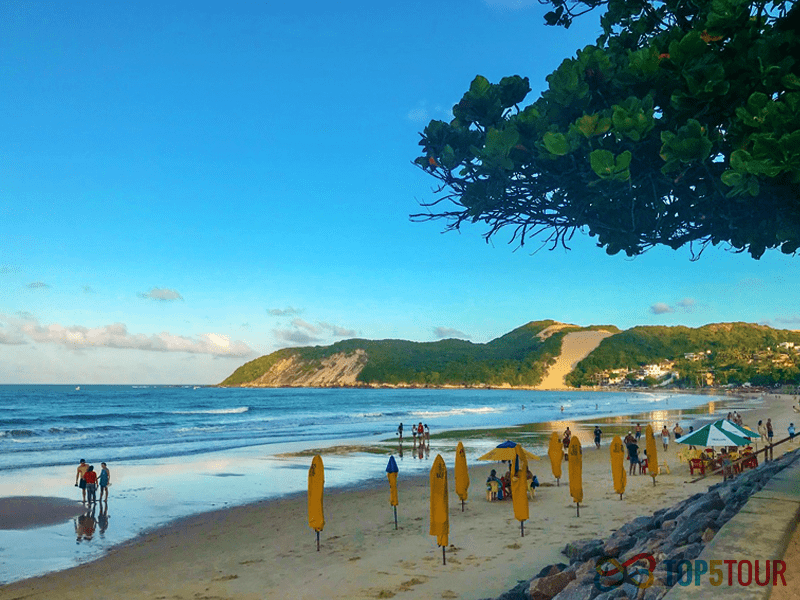
Stalls supply coconut water to people who, in the morning and before nightfall, walk, run or stroll with baby strollers along the promenade.
After Ponta Negra, there is a sequence of beaches bordered by Via Costeíra and its 13 kilometers full of hotels (the largest and most luxurious in Natal).
These beaches, with their rough seas, are very popular with tourists who take turns between swimming in the sea and in the swimming pools of the hotels that overlook the beach. The first is Barreira d’Água, followed by Areia Preta (parallel to Parque das Dunas).
At the end of the Via Costeira is Praia dos Artistas, where groups of young surfers can be seen in the afternoons; now less touristy than Ponta Negra, it is more popular with Natal residents.
Then come the beaches of Meio and Forte, both facing a stretch of calm, shallow sea protected by reefs. A stretch near Praia do Forte, which already receives the waters of the Potengi River, has sports courts. This beach offers a beautiful view of the Forte dos Reis Magos.
10. BUGGY RIDE THROUGH THE DUNAS
Buggy rides over the dunes are pleasant and exciting (“with emotion”, as the buggy drivers say), but they are not accident-free. For this reason, the driver chosen must be accredited by Setur, the Natal Tourism Office.
The driver’s credential (a sticker) must be visible on the vehicle, whose license plate must be red.
In addition, the driver must present a card, also with the credential number.
In general, good hotels have agencies or independent buggy drivers to recommend.
As for the tours, there are different options and prices.
The most common is the route that leaves Natal, passes through the dunes of Genipabu and the lagoons of Pitangui and continues to the golden dunes of Jacumã. There are other tours that can have as final destination Cabo de São Roque, Touros, or Galinhos; or even those that travel the stretch from Natal to Pipa.
The most radical of them is the one that goes from Natal to Fortaleza (one way), in four days of travel, with stops to sleep. A tip: it is good to arrange in advance the places where you will stop for meals, in order to avoid the establishments that commission the buggy drivers.
For those going to the north coast, we suggest the Redinha market: it is worth trying, in one of its thirteen boxes, the classic tapioca with ginga, a small fish that needs to be dragged with a very fine mesh net – or “redinha”, the name of the neighborhood.
11. GENIPABU: DUNAS, LAGOAS AND SEA
On the other side of the Potengi River, already in the municipality of Estremoz, is Genipabu, famous for its dunes (access by RN-302 and RN-304 or by ferry, with a 20-minute journey from Natal, at the place known as the ramp, to the landing, in the neighborhood of Redinha).
The Genipabu lagoon is dark and makes a beautiful contrast with the landscape of dunes. Unfortunately, it is unsuitable for swimming. The various lagoons in the region are pieces of sea that have somehow been dammed up in the middle of the dunes.
The similarity between the dunes of Genipabu and the Sahara desert gave Cleide and Philippe the idea of bringing dromedaries to Brazil. The fourteen animals ended up becoming Genipabu’s postcard and can be seen at Dromedunas (Genipabu beach).
Although it is a state environmental protection area, Genipabu beach is full of beach houses, bars and buggies.
A suggestion is to go to the relaxed Bar 21, set on a wooden deck right in the middle of the dunes. Further away, after crossing a small river by ferry, you arrive at Graçandu beach, quite calm, through which you can access the Pitangui dunes and, between them, the Pitangui lagoon, a large, brownish mirror of water.
At the edge of the lagoon there are chairs and tables from the Bar da Lagoa, which operates next door, where you can drink beer.
Next come the Golden Dunes or Brazilian Morocco, with a landscape of lots of sand and stretches with low vegetation. Finally, there are the Jacumã dunes and the Jacumã lagoon.
The latter, located at the bottom of the dune, can be reached by means of a descent mechanism consisting of eighteen rope cables with pulleys that attach a kind of cloth chair.
A trolley on a rail, pulled by a rope, helps to climb back up, in climbing.
12. CABO DE SÃO ROQUE
Cabo de São Roque is the point of Brazilian territory closest to Africa after Ponta do Seixas, in Paraíba.
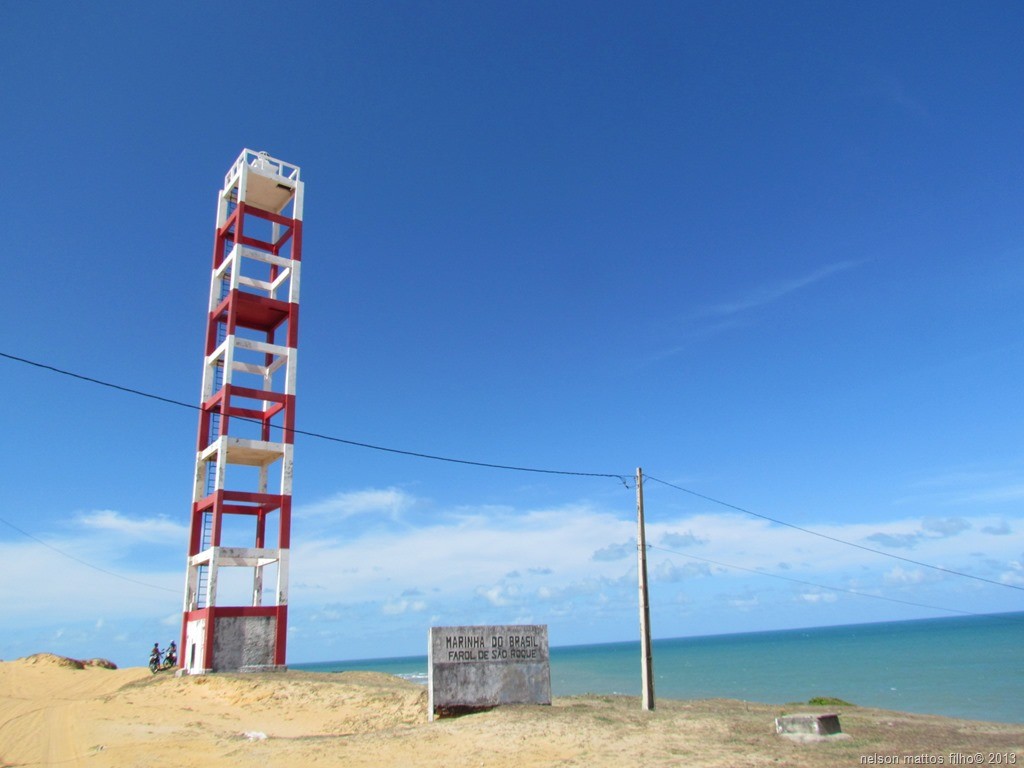
Cabo de São Roque RN
50 kilometers from Natal, after the beach of Barra de Maxaranguape, the portion of the continent that advances into the sea, called the “corner of Brazil”, has in its landscape 6 kilometers of dunes, coconut trees, rocks and cliffs.
There you will find the São Roque Lighthouse and the “tree of love” – actually two gameleiras perched on top of a dune, whose branches intertwine to form the image of two hearts. The beach, full of stones, is not good for swimming.
Like the entire north coast, Cabo de São Roque can be visited by buggy or four-wheel drive vehicle from Genipabu.
13. MARACAJAÚ

Boats reach the parrachos at low tide, when the depth varies between 1 and 3 meters, allowing good visibility for those who dive into the warm, crystal clear water with only a fin, mask and snorkel.
You can see schools of fish, rays and, with luck, lobsters and shrimps. On Maracajaú beach, full of dunes, coconut trees and lagoons, the sea is calm. The restaurants are grouped in front of the Teresa Pança Lighthouse.
Trips to Maracajaú can be made from Natal (there are agencies that offer one-day “packages”).
The condition of the roads in the rainy season, from June to August, is poor, with precarious signage; therefore, hiring a guide is recommended.
Another possibility is to go by buggy along the sandy beaches, enjoying the sun, but it is necessary to check the tide table beforehand.
Tourism and Travel Guide to Natal in Rio Grande do Norte



















